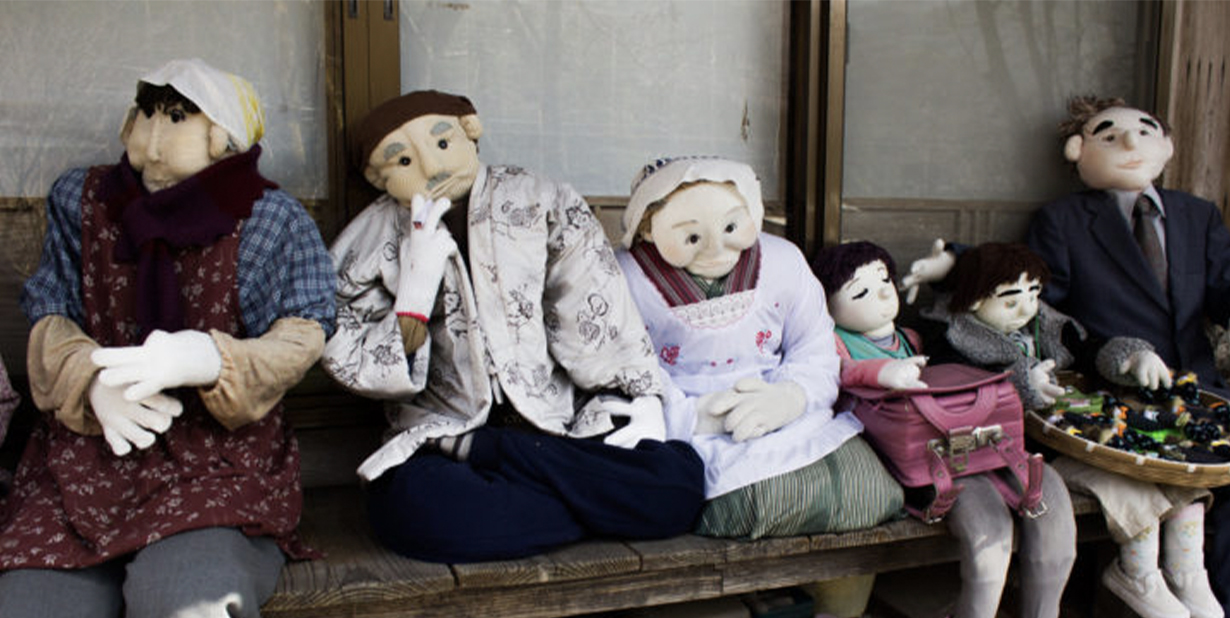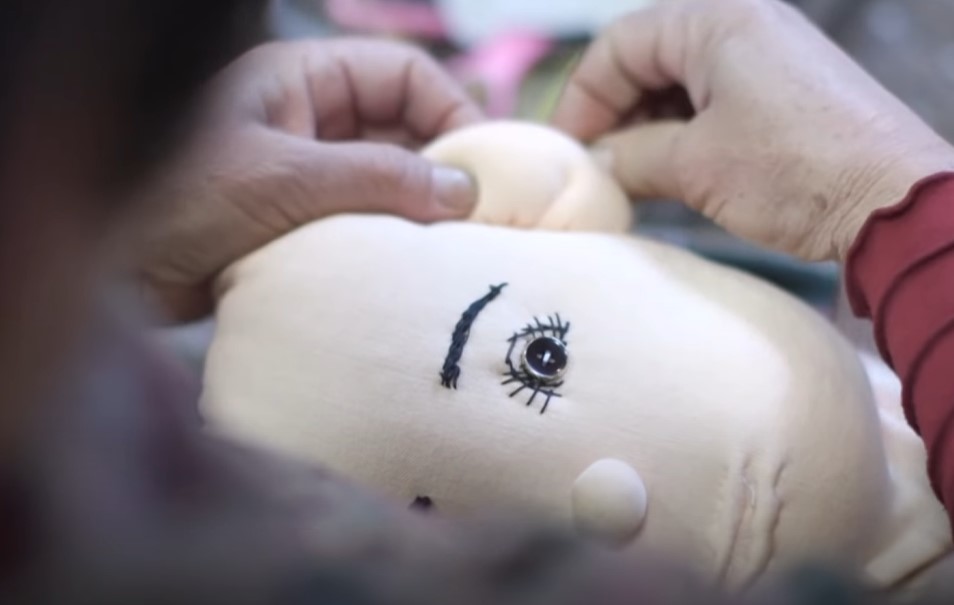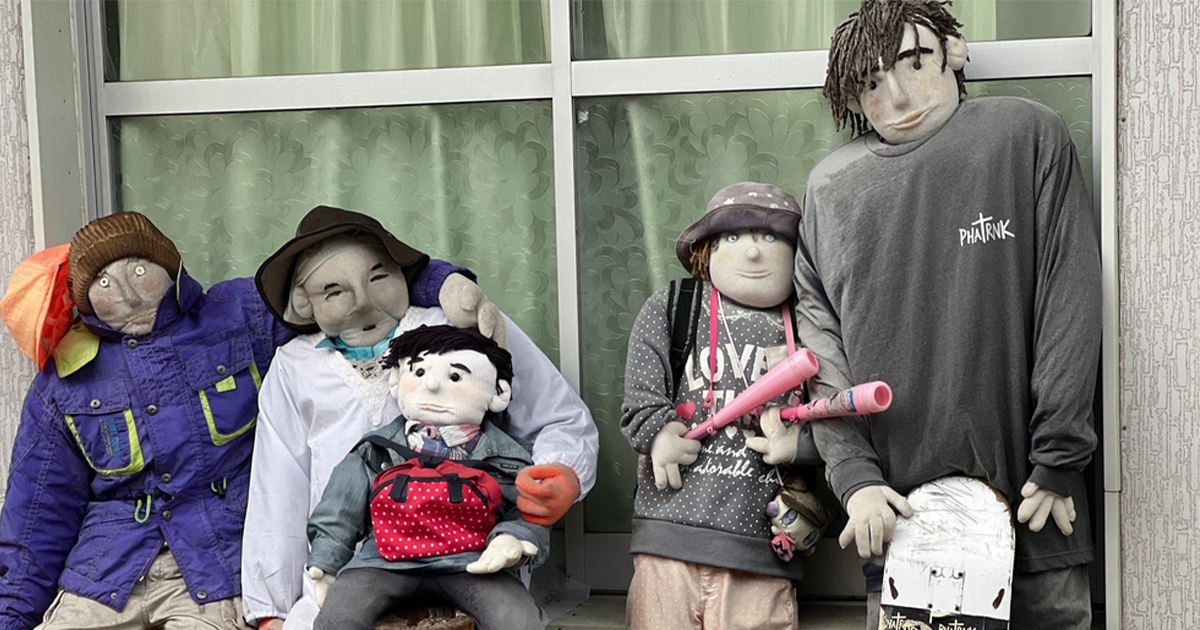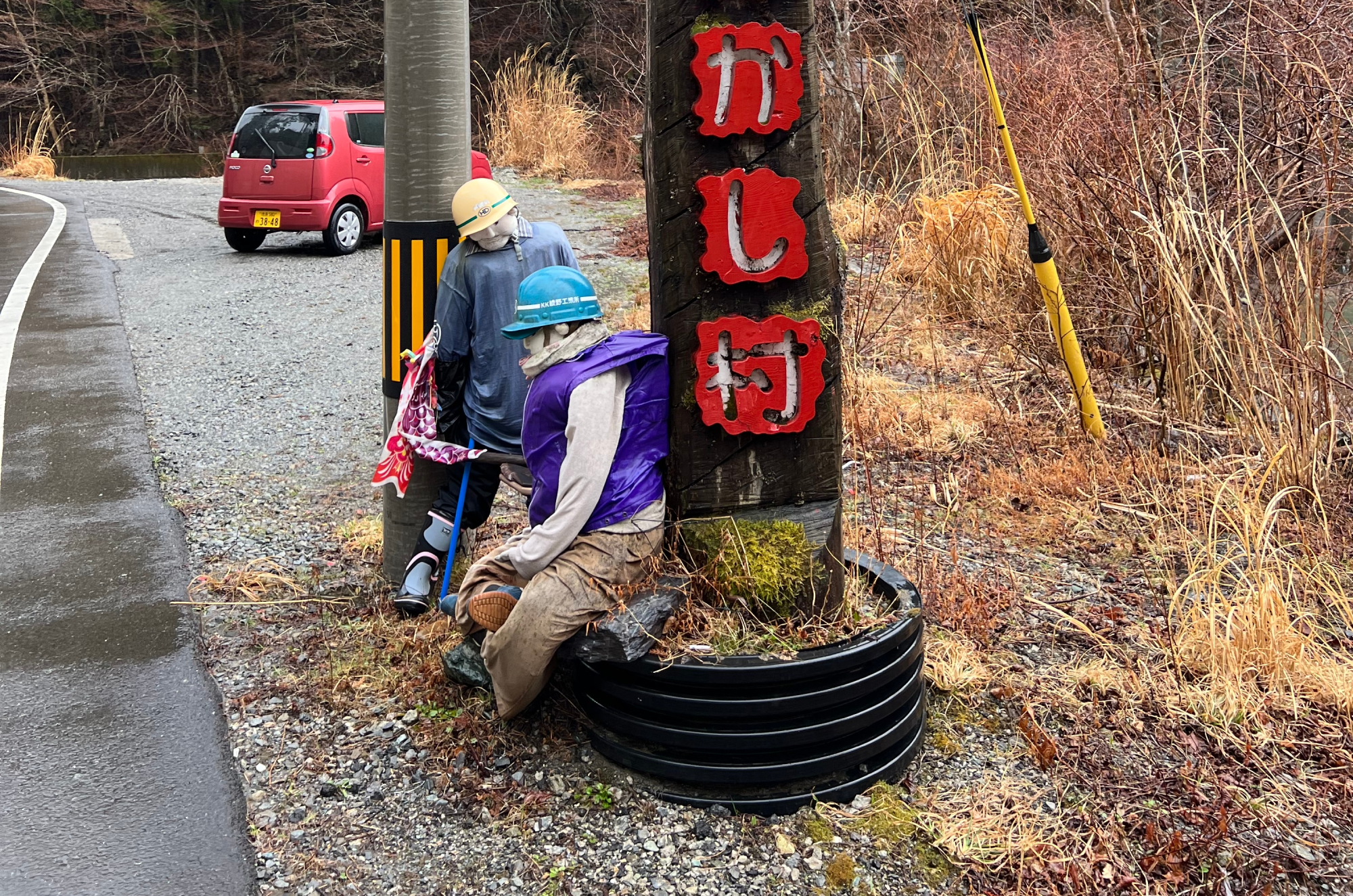Welcome To The Doll Village
Hidden in the hills of Shikoku, Japan is one of the most endearing and haunting places in the world: Nagoro Doll Village. While the village slowly continues to lose human residents as people look for jobs elsewhere or pass away, Nagoro is far from empty.
Years ago, a woman returned home and rather than let it fade into obscurity, she filled the streets and buildings with life-sized dolls.
So, who was this woman? And why dolls?

Where Is The Village?
Nagoro is located in Japan's Iya Valley, in an isolated mountainous area near Route 439. The are many other small farms and Buddhist temples in the region, but the main draw for tourists has always been the dolls.
 Kzaral, CC BY 2.0, Wikimedia Commons
Kzaral, CC BY 2.0, Wikimedia Commons
Who Made The Dolls?
In 2002, Tsukimi Ayano moved back to Nagoro so she could take care of her father. One day, she made a scarecrow with her father's likeness and put it in their garden.
That was the start of a tradition that would change the entire village.
How Many Dolls Are There?
As the village continued to lose residents, whether from old age or because they moved away, Ayano continued making scarecrows and dolls who looked like the former residents.
Today, there are almost 350 dolls in Nagoro.
A Familiar Face
After the first scarecrow, Ayano made one that looked like a neighbor who had passed on. But this doll was meant for more than scaring birds away.
Ayano talked to the scarecrow every day, like she used to do with her neighbor.
Her Inspiration
Ayano decided to make the scarecrows look like her former neighbors as a way of remembering them and bringing a little bit of character back into the fading village.
What Happened To The People?
Japan has experienced significant population decline due to a large aging population. Many small villages have become ghost towns as residents pass away—such was the case in Nagoro.
As the village population dwindled, some people also chose to leave the village.
Where Did They Go?
Surrounded by such beautiful landscape, it's hard to image that they'd find greener pastures elsewhere, but the fact is that Nagaro had little to offer younger residents. Job opportunities are few and far between in the small village, so people went looking for work in other parts of the country.
The last children were born in Nagoro more than 20 years ago.
How Many People Live There Now?
In its heyday, 300 people called Nagoro village home, but by 2015, there were only 35 residents. By September 2019, only 27 people lived there, with the youngest of them being over 50 years old.
A Quieter Time
For many years, the dolls didn't get much attention from anybody other than Ayano and her neighbors. But that all changed in 2014, when a German filmmaker stopped in the quiet village.
Into The Spotlight
Fritz Schumann was instantly fascinated by the scene in Nagoro, so much so that he made the village the subject of his 2014 documentary, Valley of Dolls.
The film was a hit with audiences worldwide, and it left people wanting to see the village for themselves.
 Fotogratfritz, Valley of the Dolls (2014)
Fotogratfritz, Valley of the Dolls (2014)
Fan Favorites
While all the dolls are fascinating, some have caught the eyes of travelers more than others. The group of dolls at the bus stop and the roadworkers are beloved by tourists, as is the fisherman and the three dolls sitting near a telephone at the village outskirts.
The School
Nagoro's school was shut down in 2012 and is now home to several dolls.
In one classroom, two of the dolls were made by the last two students who attended the school. They even dressed the dolls in their old clothes.
 Fotogratfritz, Valley of the Dolls (2014)
Fotogratfritz, Valley of the Dolls (2014)
Class Is In Session
The school has become a bit of a museum, and it's open for tourists to visit. In one classroom, you can see a dozen students taking in their teacher's lesson. In another, a strange wedding scene.
 Fotogratfritz, Valley of the Dolls (2014)
Fotogratfritz, Valley of the Dolls (2014)
New Faces
Most of the dolls are likenesses of people who used to live in the village, but over time, other people joined Ayano in making scarecrows. Now, made-up characters also populate the village.
Art Imitating Life
Each of Ayano's dolls is as unique as the person they are modeled after. Some can be found taking a stroll through the village, while others can be found fishing or just sitting taking in the scenery.
The Doll Census
To truly remember the people the dolls are modeled after—and to know who's who when it's time to rebuild them—Ayano keeps a record of all the dolls in the village. Each one has a name, an age, and their own personal backstory.
A Mother's Love
Ayano keeps her favorite scarecrow close by. The artist has placed a doll of her departed mother in her living room. Ayano speaks to her every day.
 Fotogratfritz, Valley of the Dolls (2014)
Fotogratfritz, Valley of the Dolls (2014)
Scarecrow-Making Workshop
If making one of these dolls sounds fun, then you're in luck. From April to November, Ayano hosts a scarecrow-making workshop on the fourth Wednesday of each month. You'll have to bring your own sewing supplies and doll clothes, but you can make the doll look like whoever you want.
 Fotogratfritz, Valley of the Dolls (2014)
Fotogratfritz, Valley of the Dolls (2014)
What Are They Made Of?
The dolls start with a wooden base, before Ayano adds clumps of cotton to make the head, buttons for the doll's eyes, stretchy fabric for the skin, and a bunch of rolled newspaper and wire that is shaped to form the doll's skeleton.
How Long Does It Take?
Ayano puts a lot of detail into her dolls. She's also a senior citizen, so making each of these life-sized effigies takes quite a bit of effort.
All in all, it takes her about three days to make one doll.
How Many Dolls Has She Made?
While some of the dolls have been made by visitors, most are Ayano's creations. Taking account of original dolls and their replacements, Ayano has made more than 400 dolls since 2002.
Nagoro Scarecrow Festival
Nagoro Doll Village attracts visitors year-round, but one of the most popular times to visit is the first Sunday of October. That's when the village hosts the Scacecrow Festival.
This day-long celebration filled with good food and fun is meant to honor the scarecrows. It's also free for anyone to join.
Fun And Games
In addition to learning more about the dolls, the Scarecrow Festival is a great opportunity to take in the local culture and food. There's also lots of fun for you to join in on. Photo contests and rice cake throwing competitions are two of the more popular attractions at the festival.
Pale Imitations
After the seeing all the hype over Nagoro's scarecrows, some other Japanese villages have tried to recreate the appeal with their own scarecrows. Some have tried to make their dolls seem livelier or more colorful, but the doll's in Nagoro still remain the top choice for travelers around the world.
A Haunting Legacy
Nagoro may have lost most of its human inhabitants, but the village is far from lifeless. The scarecrows have made the village a curiosity for travelers worldwide and keep the memory of the former residents alive long after they've gone.
And since the dolls need to be replaced every three years, people can take in the incredible experience of crafting one of these unique effigies for years to come.


























